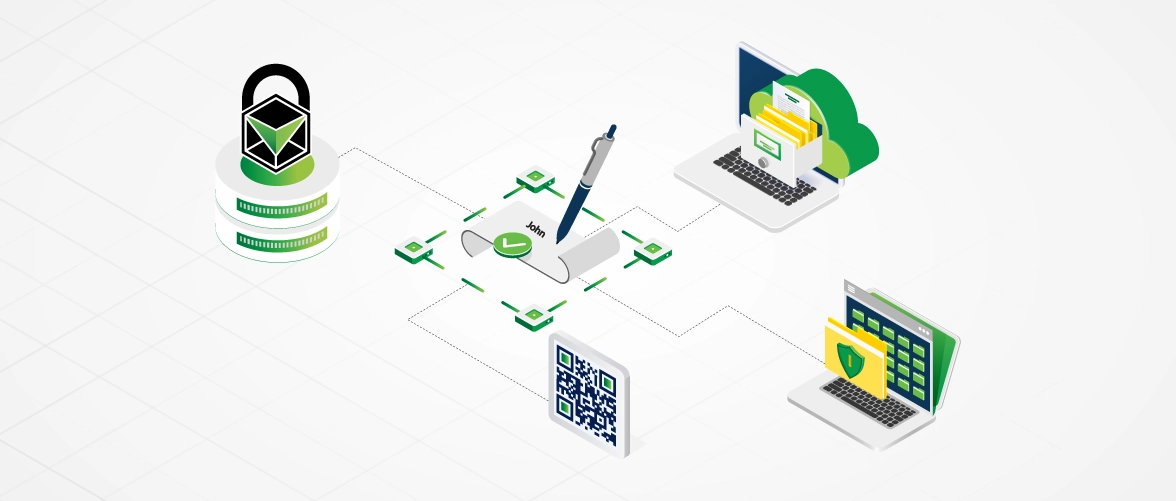Types Of Electronic Signatures And Their Use Cases.
06 Nov 2024

How to make any documentation process faster? The answer points to "digital" every time. No doubt, we can use electronic signatures as the best way to sign important documents.
Electronic signature solutions help thousands of businesses to create a better signing experience, automate their documentation processes, and eliminate long hours of work. Not just that but ensures increased productivity, document transparency, and better efficiency, every time. But, what are the types of signatures? How do they work?
VeriDoc Sign introduces you to the different signatures and their uses in this guide.
Types Of Electronic Signatures
Wet Signatures (Non-Electronic)
When you sign a piece of physical paper using a traditional pen, we call it the wet signature. These are not technically electronic signatures. But, we must highlight this type of signature as well.
When you file for bankruptcy, wet signatures are vital. In this case, electronic signatures are not valid.
When you scan your wet signature into a digital format, we count it as a standard eSignature (SES). This is because you generate the signature image electronically.
Even today you will still need to sign and submit your documents in several scenarios physically.
Standard Electronic Signatures (SES)
The most familiar type of eSignature for online signing is the online or virtual signature. An SES relies on a user's intent. The intent, in turn, acts as proof that the document must be valid.
A standard electronic signature is effortless to use. In addition, it is also the easiest to disprove. This is because there are minimal security protocols in place that you need to verify the signer's authenticity.
Examples:
A scanned image of the handwritten signature
Checking a tickbox on the website
Digital Signatures & Advanced Electronic Signatures (AES)
Digital and advanced electronic signatures are a step above standard electronic signatures. Digital signatures are far more secure than the other kinds. The reason is that it verifies the signer's authenticity even before a document gets signed. These signatures use the public key infrastructure or PKI which ensures the authenticity of the signatures.
To qualify as AES, the signature should be:
(a) uniquely linked to its signatory;
(b) capable of identifying its signatory;
(c) linked to the data signed. In that case, any subsequent change in the data is easily detectable.
What Type Of Electronic Signature You Must Use?
The answer usually depends on your workflow and your requirement. However, most users want to maintain a good balance between its usability and legal enforceability. We all agree that this idea is fair.
Thus, VeriDoc Sign often recommends eSignatures if you have to send vital documents for an online signature. Most of the security standards behind the scenes make the documentation process user-friendly and approachable—even for signers unfamiliar with eSigning technology.
Benefits Of Electronic Signature Adoption
Between the drive to work from anywhere and maintaining professionalism, businesses have adopted electronic signatures for a variety of other reasons:
Companies Can Streamline The Process: When you use digital tools, you can incorporate electronic signatures automatically into templates for a quicker documentation experience.
Storage Gets Easier With eSignatures: Digital files reduce paper waste. In addition, they are simple to store, and you can easily track them throughout the entire document management cycle.
You Get Faster Output: When you sign contracts electronically using electronic signatures, the process gets much faster than a handwritten signature which in turn increases productivity in any organisation.
Ensure Better Security: When you sign a document correctly, electronic signatures are more secure than wet signatures. They also provide additional legal protection in a breached contract or NDA. They also provide document transparency which is one of its most attractive benefits.
Combining the ease of use for most electronic signature solutions with their current legal status makes electronic document signing a safe bet for everyone.